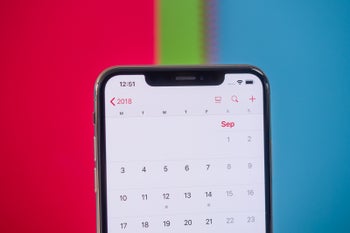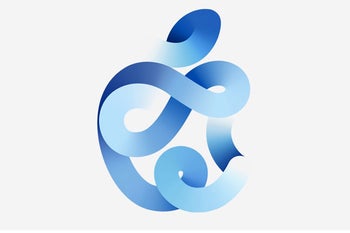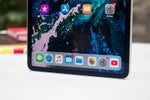
Smallest iPhone 12 5G to have narrower notch, but 120Hz delayed until iPhone 13
by Joshua SwingleThe iPhone XS notch
Earlier this week, Apple reportedly axed its 120Hz ProMotion technology from the iPhone 12 series at the final hurdle before mass production. Today, one reliable analyst is corroborating those claims.
Apple killed 120Hz because of battery life
Speaking to investors in a recent note seen by MacRumors, Ming-Chi Kuo said he does not expect Apple to introduce support for a 120Hz refresh rate on any iPhone 12 model due to battery life concerns.
The iPhone 12 lineup’s battery capacity is becoming “smaller” than last year. The A14 Bionic chipset should improve efficiency thanks to its 5-nanometer production process, but Apple is already planning 5G network support as standard.
That connectivity support will significantly increase battery drain and the introduction of 120Hz on top of that would ultimately have “significantly hurt the user experience,” according to Kuo.
The analyst expects Apple to release two versions of all iPhone 12 models. One version will solely support sub-6GHz technology and the other version will offer both mmWave 5G and sub-6GHz.

The sub-6GHz version will reportedly hit production first. Kuo claims the 5.4-inch iPhone 12 variant is scheduled to enter mass production in early October and it’ll be followed by the 6.1-inch model a week or two later.
The iPhone 12 Pro flagships with sub-6GHz tech are expected to enter mass production in late October. There’s no word on a timeline for the mmWave 5G variants.
There is a smaller notch on the way... Kinda
Speaking of the 5G iPhone 12 series, recent reports have suggested Apple has zero plans to update its very controversial notch design. Ming-Chi Kuo, however, says that isn’t completely true.
While the 6.1-inch and 6.7-inch iPhone 12 models feature notch areas that are the same size as before, the compact 5.4-inch iPhone 12 will have a “slightly narrower notch area for displaying the information well in the upper left and upper right corners.”
The difference will probably go unnoticed by most customers because Apple seems to be simply adapting its notch to the significantly smaller size of the 5.4-inch model, but it’s still a change that’s worth mentioning.

The iPhone 11 notch Everything else should remain unchanged, including the dual-camera setup on the back, which is likely to occupy a significant portion of the rear panel.
Apple is working in 120Hz for the iPhone 13
Circling back to 120Hz ProMotion technology, Ming-Chi Kuo says Apple is now refocusing its efforts towards the iPhone 13 or iPhone 12S, whichever the company chooses to announce in fall 2021.
Apple will adopt LTPO – or low-temperature polysilicon and oxide display — technology to drastically lower the display’s power consumption. Samsung recently used the tech on the Galaxy Note 20 Ultra 5G.
Apple itself has used LTPO for the past couple of years, although it has so far been limited to the Apple Watch Series 4 and Series 5. For those of you that don’t know, LTPO automatically adapts the refresh rate depending on what content is being shown.
When a user is playing an intense game that supports 120Hz, the refresh rate is upped to its maximum. When displaying a static image, the refresh rate can theoretically drop to as low as 1Hz, therefore reducing the impact on battery life.







